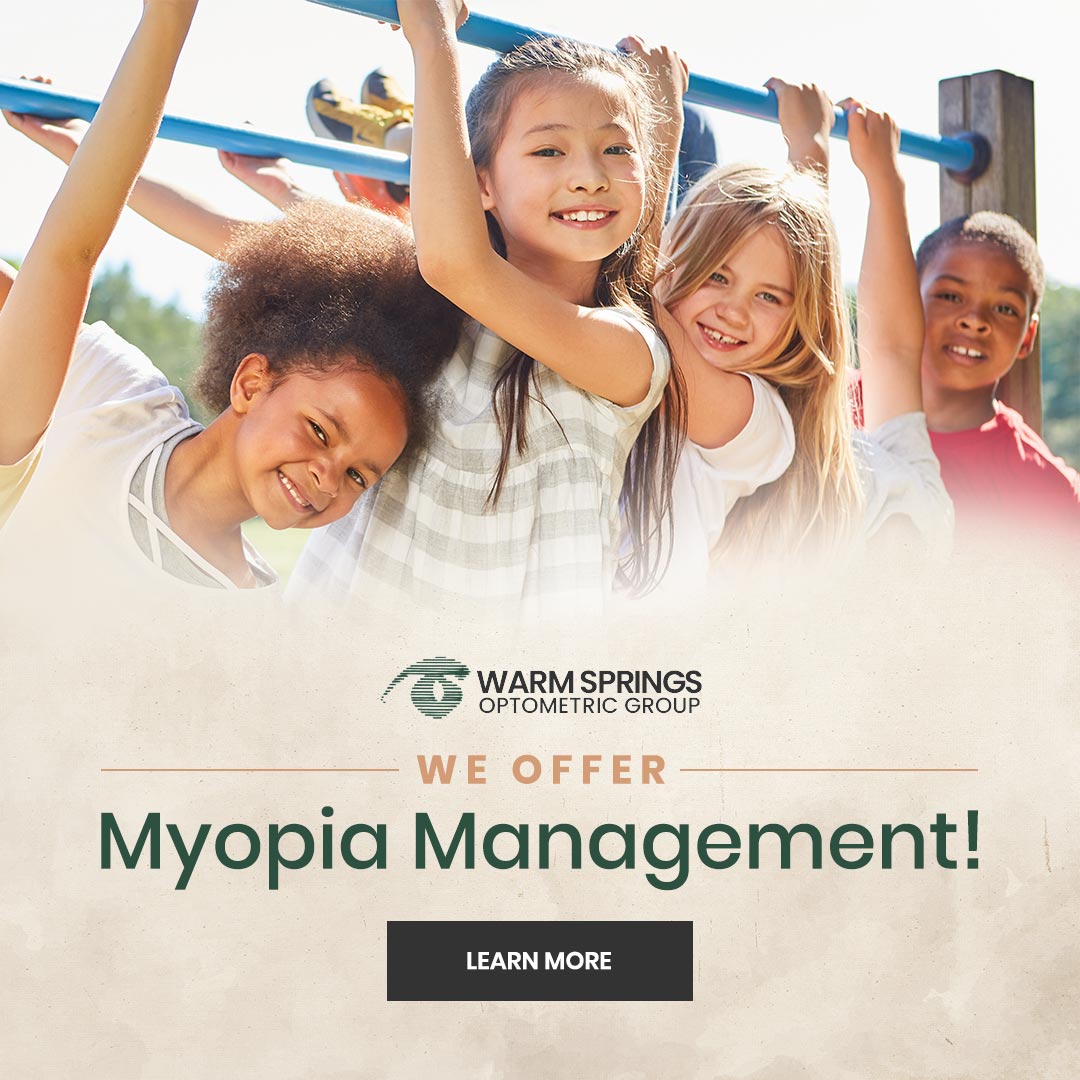
Myopia, also known as nearsightedness, is a common refractive error that affects the vision of millions of children worldwide. This condition occurs when the eye gets elongated longer than standard size, causing light to focus in front of the retina instead of directly on it. As a result, distant objects appear blurred, while close-up objects remain clear.
Myopia typically develops in childhood and can progress rapidly during the growing years. The causes of myopia are multifaceted, with both genetic and environmental factors playing a role. Spending too much time on close-up activities, such as reading, using digital devices, or engaging in insufficient outdoor activities, can contribute to the development and progression of myopia in children.
Common Symptoms and Signs of Myopia
The common symptoms of myopia in children include:
- Blurred vision when looking at distant objects
- Frequent squinting or eye strain
- Headaches or eye fatigue after prolonged close-up work
- Difficulty seeing the board or screen at school
- Preference for sitting closer to the TV or computer
The Importance of Myopia Management in Children
Myopia management in children is crucial for several reasons. As myopia progresses, the risk of developing sight-threatening complications, such as retinal detachment, glaucoma, and cataracts, increases. Additionally, high myopia can lead to a higher dependence on corrective lenses, which can be costly and inconvenient for quality of life.
By proactively managing myopia in children, you can help slow the progression of the condition and reduce the long-term impact on your child's vision and overall eye health. Effective myopia management strategies can provide your child with better visual outcomes and a higher quality of life.
What is Ortho-K?
Orthokeratology, or Ortho-K, is a non-surgical vision correction technique that uses specially designed rigid gas-permeable contact lenses to temporarily reshape the cornea, the clear front part of the eye. These lenses are worn overnight while you sleep and they gently mold the cornea, to correct refractive errors.
In the morning, you can remove the Ortho-K lenses and enjoy clear, sharp vision throughout the day without the need for glasses or daytime contact lenses. Ortho-K is a popular myopia management option for children because it provides a reversible, non-invasive way to control the progression of myopia.
How Ortho-K Helps Slow the Progression of Myopia
Ortho-K works by temporarily flattening the central part of the cornea, which helps to focus light directly on the retina, reducing the eye's nearsightedness. This corneal reshaping effect not only corrects vision but also has been shown to slow the progression of myopia in children.
By using Ortho-K lenses, you can help your child maintain clearer vision while also potentially slowing the worsening of their myopia over time. This can be particularly beneficial during the critical years of eye development, when myopia is most likely to progress rapidly.
The Benefits of Ortho-K for Kids with Myopia
Ortho-K offers several benefits for children with myopia:
- Improved Visual Acuity: Ortho-K can provide your child with clear, sharp vision throughout the day without the need for glasses or daytime contact lenses.
- Slowed Myopia Progression: By temporarily reshaping the cornea, Ortho-K has been shown to slow the progression of myopia in many children, reducing the risk of developing high myopia and its associated complications.
- Convenience and Flexibility: Ortho-K lenses are worn only at night, allowing your child to enjoy clear vision and participate in activities without the hassle of glasses or daytime contacts.
- Reduced Dependence on Corrective Lenses: By slowing the progression of myopia, Ortho-K can help minimize your child's long-term dependence on corrective lenses, potentially reducing the financial and practical burden.
- Improved Self-Confidence: With clear, unobstructed vision, your child may experience increased self-confidence and improved social interactions, especially during their formative years.
Schedule Your Child’s Eye Exam with Warm Springs Optometric Group Today
As a parent, you want the best for your child's vision and eye health. By understanding the causes and symptoms of myopia, as well as the importance of effective myopia management, you can take proactive steps to help your child maintain clear, sharp vision and reduce the risk of long-term eye health complications. At Warm Springs Optometric Group, optometrists have helped hundreds of children with myopia for almost 15 years.
To learn more about how Ortho-K can help manage your child's myopia, schedule a consultation with Warm Springs Optometric Group. We can evaluate your child's vision, discuss the benefits of Ortho-K, and develop a personalized treatment plan to help your child achieve their best possible visual outcomes. Visit our office in Fremont, California, or call (510) 490-0827 to book an appointment today.






